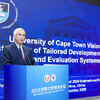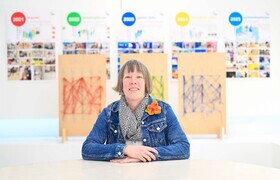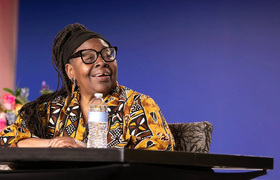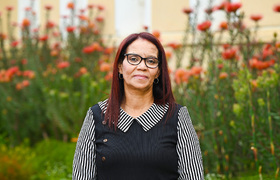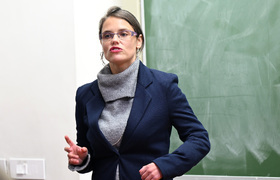Women at work
28 August 2025 | Story Nicole Forrest. Photo Emma Roberts. Read time 7 min.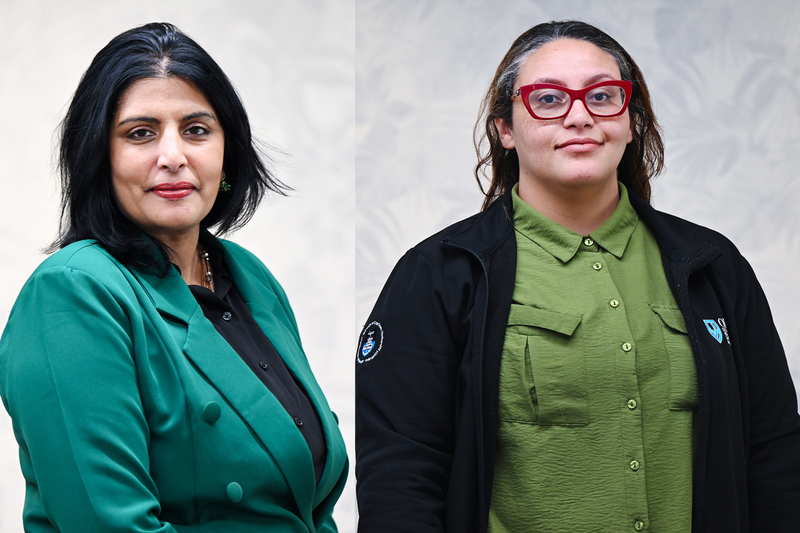
Occupational health and safety (OHS) has long been a male-dominated field, with women making up only a small fraction of leadership roles. Yet the successes within the University of Cape Town’s (UCT) Occupational Health, Safety and Environment (OHSE) division demonstrate just how valuable a woman’s perspective can be.
On any given day, there are hundreds of events taking place at UCT, from sit-down lectures to hands-on practicals, food preparation and social affairs. This rich diversity of engagements is great for learning and research outputs, but it does present some major challenges when it comes to keeping everyone on campus safe and healthy.
At the forefront of the efforts to overcome these challenges is the woman-led OHSE division. Positioned within the Properties and Services Department, the division is responsible for the well-being of every person who steps onto the university’s campuses.
“We are mandated with implementing the strategic framework for occupational health, safety and environment, ensuring that it’s integrated within all the faculties and departments, as well as the research fraternity and student life,” said OHSE division director, Kirshni Naidoo.
“It’s quite a wide portfolio and because of the way occupational health and safety plays out within the higher education setting, there are many different specialists required to ensure that we align with international standards, including ISO 45001 and ISO 14001.
“On a day-to-day basis, we are managing risks attached to occupational hygiene surveillance, construction work, medical surveillance, onboarding for any staff and contractors working on campus, medical emergency services, occupational hygiene surveillance and a range of other activities,” Naidoo explained.
A journey of continual improvement
Since the start of her time at UCT, which began during the COVID-19 pandemic and shortly before the April 2021 wildfires, Naidoo has been laser focused on embedding safety into the university’s culture.
“There is a lot of activity on campus and the OHSE portfolio is quite variable. We’ve got teaching and learning, research, student life … so there’s always something happening. From our viewpoint, the best thing that we can do is to have a robust framework in place so that we can be proactive in our approach,” she said.
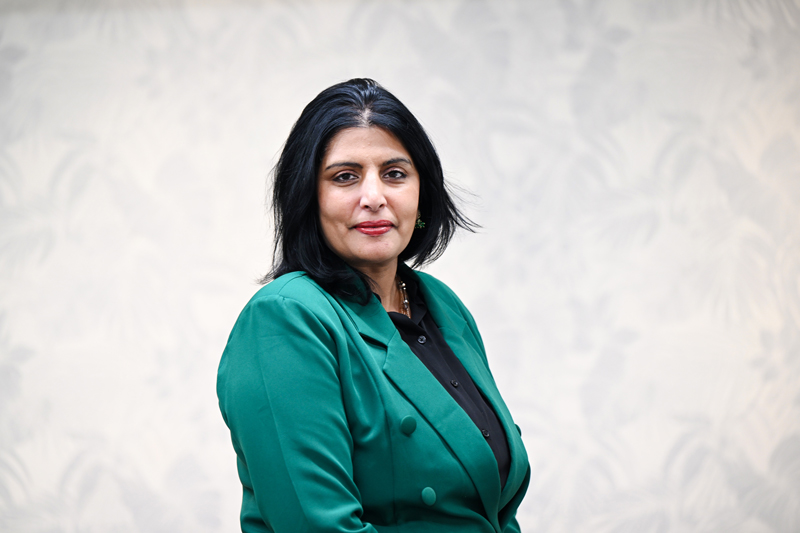
In the director’s eyes, OHS is not a tick-box exercise and one of the most significant challenges is integrating practices into diverse operational activities across academic, research and support functions.
“This requires not only technical expertise but also strategic stakeholder engagement to ensure buy-in from key departments and leadership. Building a safety culture in such a dynamic and decentralised institution demands continuous advocacy, education and collaboration,” she noted.
While the scale and complexity of the UCT landscape might seem daunting to many, it’s well within Naidoo’s wheelhouse. Having honed her technical and operational skills in OHSE leadership at a diverse range of companies, the director is well aware of what it takes to engrain health and safety into the culture of an institution.
“Ultimately, building a sustainable OHSE culture means taking people along the journey of continual improvement. When individuals feel heard, valued and empowered, they become active participants in creating a safer, healthier campus. That’s where real transformation begins,” she said.
Inspiring commitment for long-term change
Of course, no task of this magnitude can be undertaken singlehandedly and Naidoo pointed out that she remains thankful for the investment that UCT leadership has made into creating a safer and healthier environment.
In addition, she is grateful for the devoted team within the OHSE division and the entire UCT community. This includes those who take up positions on a voluntary basis purely because they have a deep sense of care and responsibility towards others.
“I can confidently say that having a supportive leadership team – both within Properties and Services and across UCT – is absolutely critical to making meaningful progress in occupational health and safety. The real key to driving change lies in winning the hearts and minds of people. It’s not just about enforcing compliance; it’s about inspiring commitment,” she said.
At the heart of inspiring this commitment and driving the division towards its goals is a team of 11 professionals who work alongside Naidoo to ideate and implement the myriad tasks that come with assuring and improving UCT’s health and safety programmes.
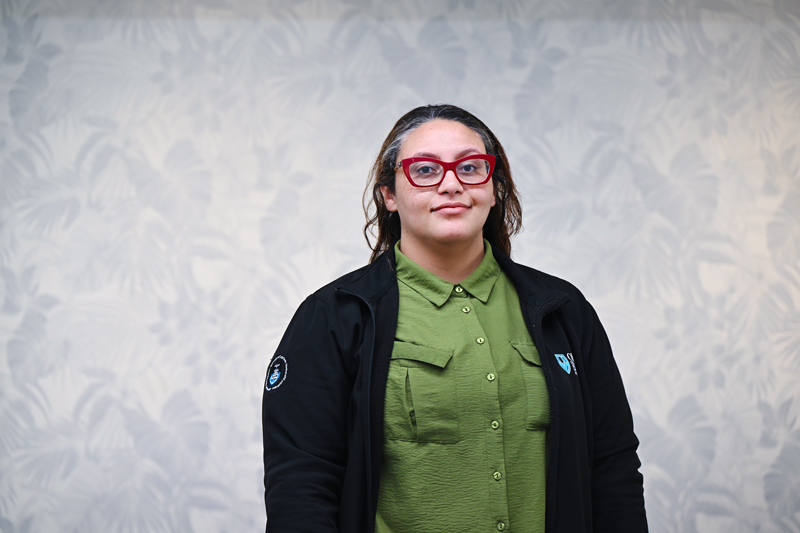
One of those professionals is Kim van Reenen, the environmental risk manager who is responsible for mitigating risks to the environment that could emerge from a wide range of activities that take place on campus every day.
She oversees the proper execution of a variety of tasks that could potentially impact the environment in, around and further afield of UCT’s campuses – from the seemingly simple disposal of paint tins to the ostensibly more complex biosafety practices – alongside colleagues from other departments and offices.
Van Reenen’s most impactful work while in her seat within the OHSE, however, has been her spearheading of the development of UCT’s ISO 14001-compliant environmental management system.
“We’re trying to embed environmental protection against potential hazards and people’s safety into every decision that anyone on campus makes. It’s all about people protecting the planet; planet protecting people. We want to build an institution where environmental protection and the risk mitigation strategies come together for the benefit of people and the planet, while still making financial sense,” she explained.
Creating an enabling space
While improving the overall health and safety outcomes for UCT is important for both these inspiring women, the real reward comes with facilitating collaboration that can drive change at UCT and beyond.
“For me, collaboration is the most important thing. We’re focused on creating a space that enables everyone at UCT to engage with one another and come up with great ideas that can help us and the institution so that we can foster long-term continuity,” said Van Reenen.
Naidoo agreed on this point, noting that the change that she and her team have driven in the five years since her appointment has been built on a foundation of collaboration and cooperation.
“Change takes time. It requires fostering relationships, navigating resistance and sometimes taking bold steps when the path forward isn’t clear. Anyone can implement the structural components of a management system – policies, tools, and processes – but it’s the soft skills that truly make the difference. Resilience, patience, and emotional intelligence are essential,” she said.
 This work is licensed under a Creative Commons Attribution-NoDerivatives 4.0 International License.
This work is licensed under a Creative Commons Attribution-NoDerivatives 4.0 International License.
Please view the republishing articles page for more information.





